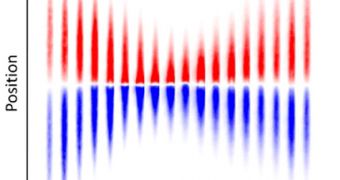A group of physics experts from the Massachusetts Institute of Technology (MIT), in Cambridge, has recently created clouds of gas that cannot pass through each other. Achieving this with a cloud of chemicals about 1,000 times thinner than air is a tremendous feat of ingenuity.
Generally, when two clouds of normal gas meet, they pass right through each other, due to the fact that they are very loosely bound. What the MIT team did create clouds of ultracold gas that simply bounce off each other when they meet.
These clouds in essence behave like bowling balls that are rolled at each other. They collide and break apart, rather than merge or pass through one another. According to experts, this is the first time that impenetrable gases of this nature have been produced.
Data obtained during the new research will come in very handy in analyzing what goes on inside neutron stars, high-temperature superconductors and quark-gluon plasma. The latter is a form of matter the experts believe permeated the Universe a few fractions of a second after the Big Bang.
MIT physicists managed to obtain the effect they were looking for by using clouds of lithium atoms that had been previously cooled to nearly absolute zero. Details about how this was done were published in the April 14 issue of the top scientific journal Nature.
The research effort was led by expert Martin Zwierlein, who holds an appointment as an assistant professor of physics at MIT. The lithium isotope that was used for the experiments is part of the fermion class of elementary particles, which also includes protons, neutrons, quarks and electrons.
“When we saw that these ultra dilute puffs of gas bounce off each other, we were completely in awe,” explains the lead author of the new study, MIT graduate student Ariel Sommer. He says that the gas was cooled to 100 billionths of one Kelvin, as close to absolute zero as possible.
Experts conducted their research at a facility called the MIT-Harvard Center for Ultracold Atom. The results are amazing, and the reaction the experts got in the international scientific community is intense.
“It’s quite remarkable that these gases would actually turn around and bounce,” says John Thomas, a Duke University professor of physics who was not involved in the new study.
Some of the data obtained by the MIT group could be used to interpret readings collected by the three massive detectors installed on the Large Hadron Collider (LHC). This is the largest particle accelerator in the world, and produces quark-gluon plasma regularly.

 14 DAY TRIAL //
14 DAY TRIAL //